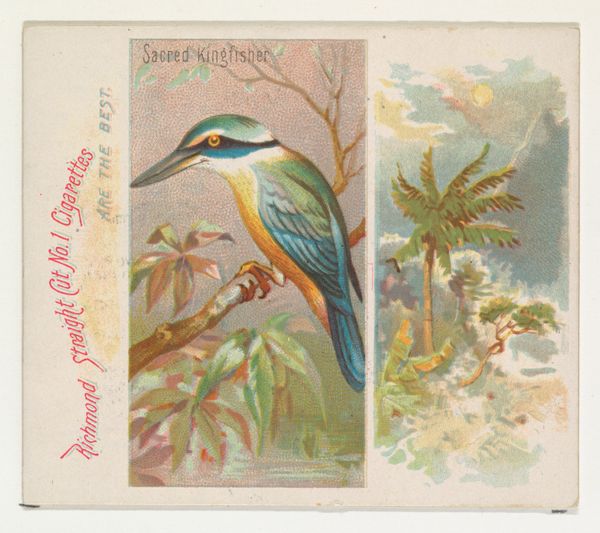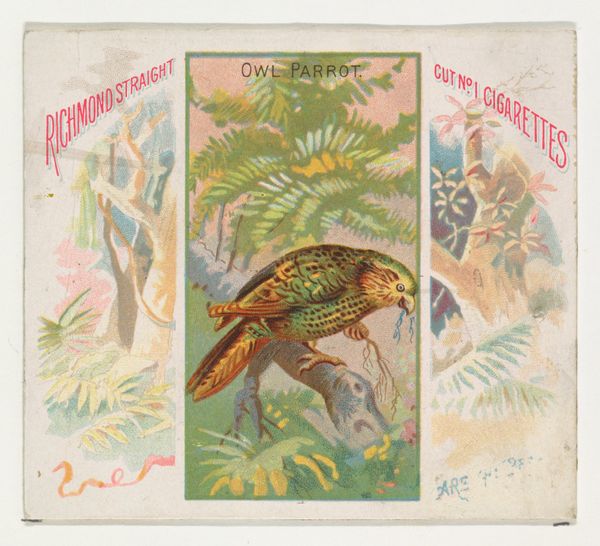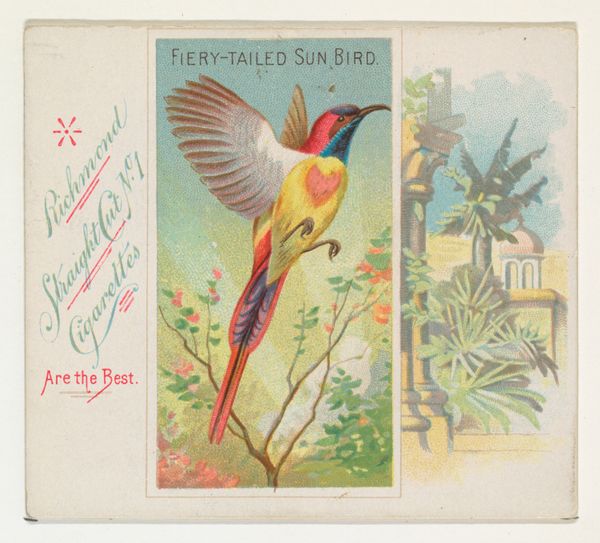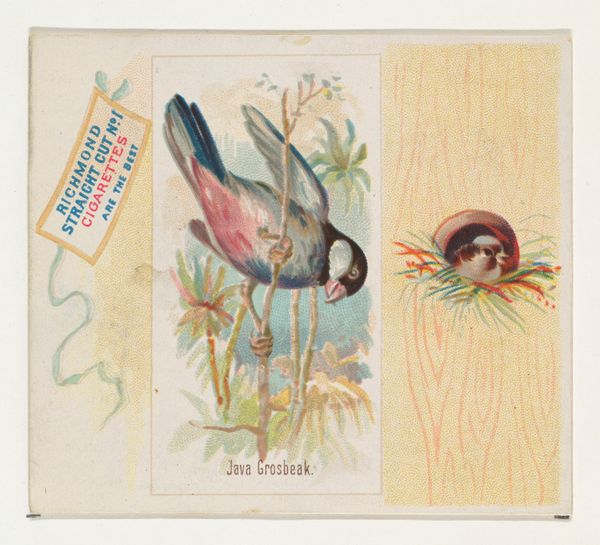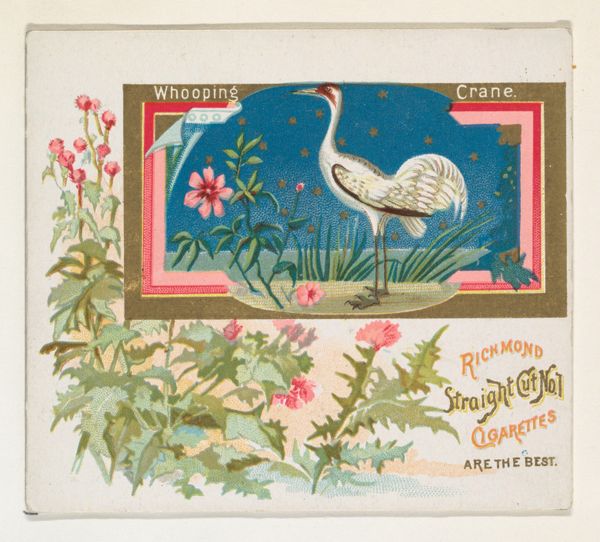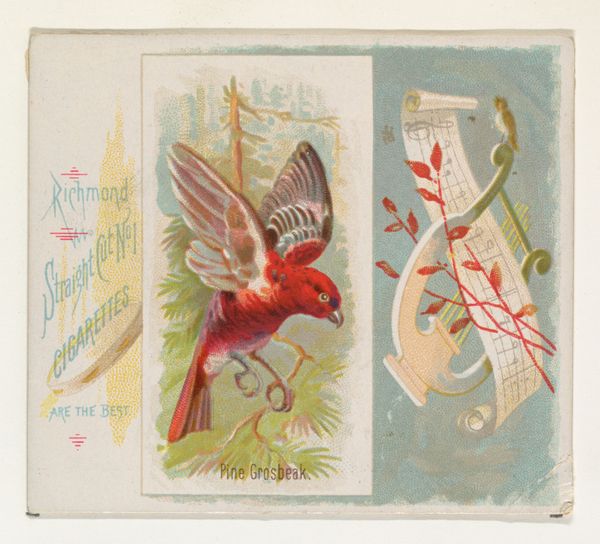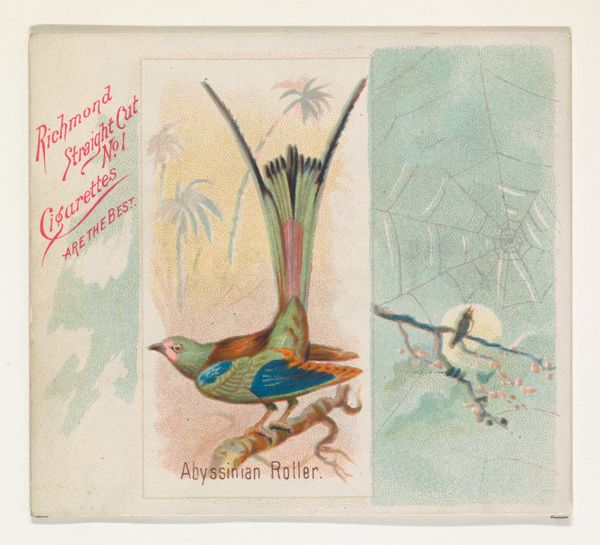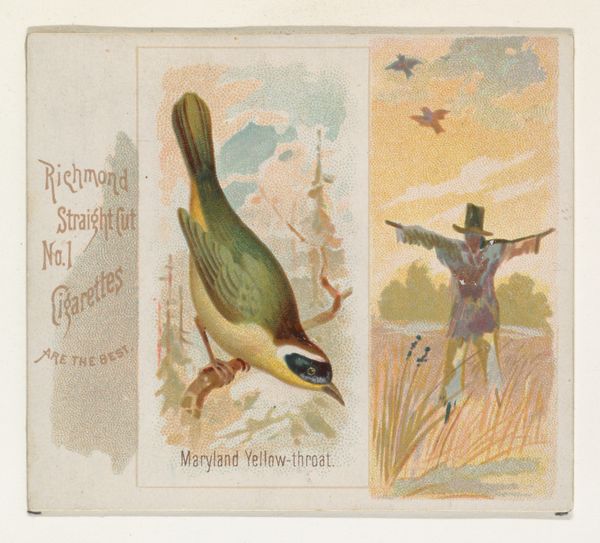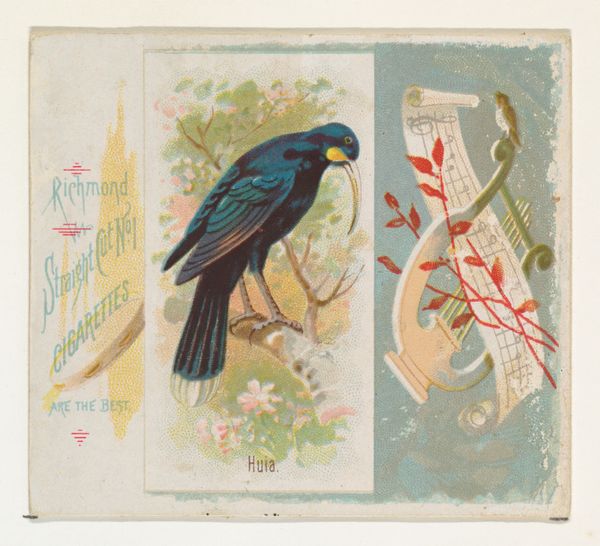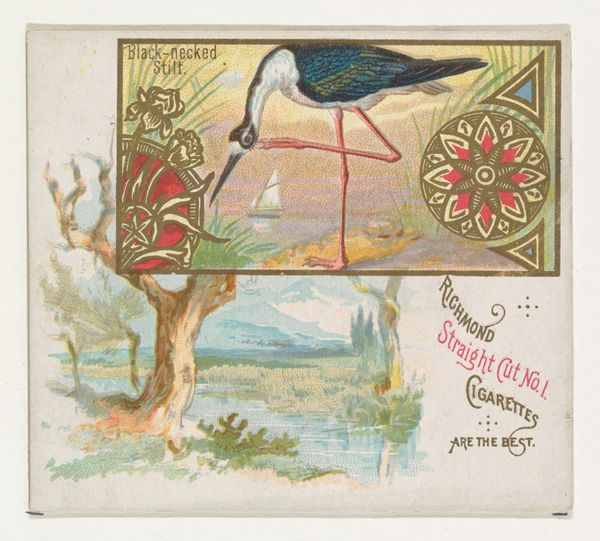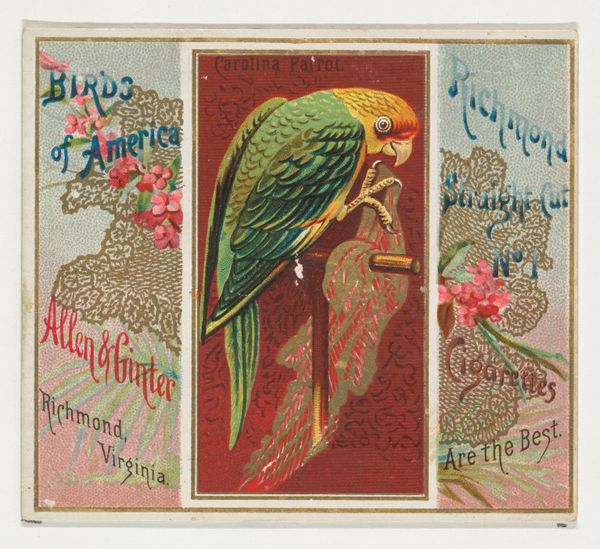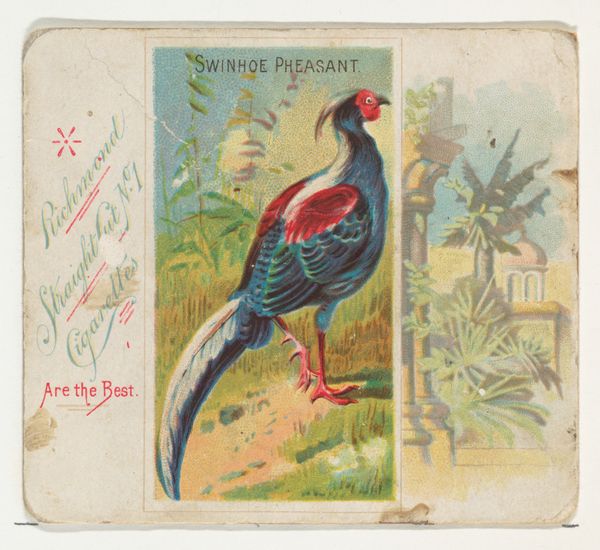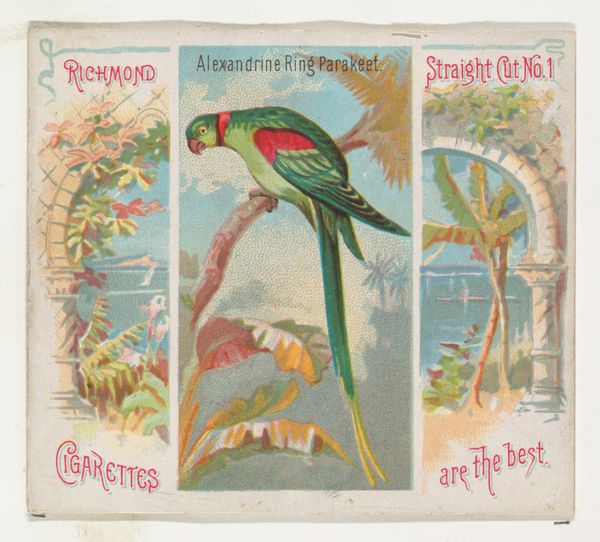
Java Peacock, from Birds of the Tropics series (N38) for Allen & Ginter Cigarettes 1889
0:00
0:00
# print
#
coloured pencil
#
naive art
Dimensions: Sheet: 2 7/8 x 3 1/4 in. (7.3 x 8.3 cm)
Copyright: Public Domain
Curator: This work is titled "Java Peacock," and it's part of the "Birds of the Tropics" series created in 1889 for Allen & Ginter Cigarettes. It’s currently held here at the Metropolitan Museum of Art. Editor: My first thought is of its odd beauty; that saturated green and the strangely flattened perspective creates an otherworldly effect. Almost like a dream. Curator: The "Birds of the Tropics" series really exemplifies the late 19th-century fascination with exoticism. These cards, printed with colored pencils, were inserted into cigarette packs to boost sales. Imagine the global reach and influence of this marketing! Editor: Exactly, and those implications can't be ignored. It highlights how commercial ventures, like the tobacco industry, fueled and profited from the colonial gaze and the romanticized vision of distant lands. It feels almost voyeuristic, appropriating these cultures to sell their products. Curator: It's a double-edged sword, isn’t it? While exploiting exoticism, they also circulated images of other parts of the world that the public likely had never seen before, feeding the appetite for, and even perhaps laying the ground work for further cultural exchanges. We see the influence of Japonisme too, a clear nod in the picture to Japanese prints and decorative styles that became hugely popular here in the west. Editor: That stylistic nod does give it an interesting edge, and the rendering certainly draws from "naive art." This points to a very uneven cultural exchange in which the west sees other cultures in an exploitive way while at the same time finds artistic inspiration from them. How do we deal with art that has such a mixed background? Curator: It prompts us to consider the institutional framework around art, doesn't it? What it depicts, how it circulates, and where it ultimately finds its place in the public eye. Art shapes, and is shaped by socio-political currents, something we should be continually aware of when understanding its impact. Editor: Right, this image, seemingly simple, serves as a crucial lens for understanding historical and ongoing power dynamics, encouraging dialogue around identity, representation, and cultural consumption. Curator: Seeing this drawing, especially as part of a larger series intended for mass consumption, reveals a whole lot about art, capitalism, and the way our globalized world has always been. Editor: Absolutely. Looking at it this way is to view the art as part of the continuum between past inequalities and the current global landscape, inviting us to critically examine how these dynamics persist.
Comments
No comments
Be the first to comment and join the conversation on the ultimate creative platform.
